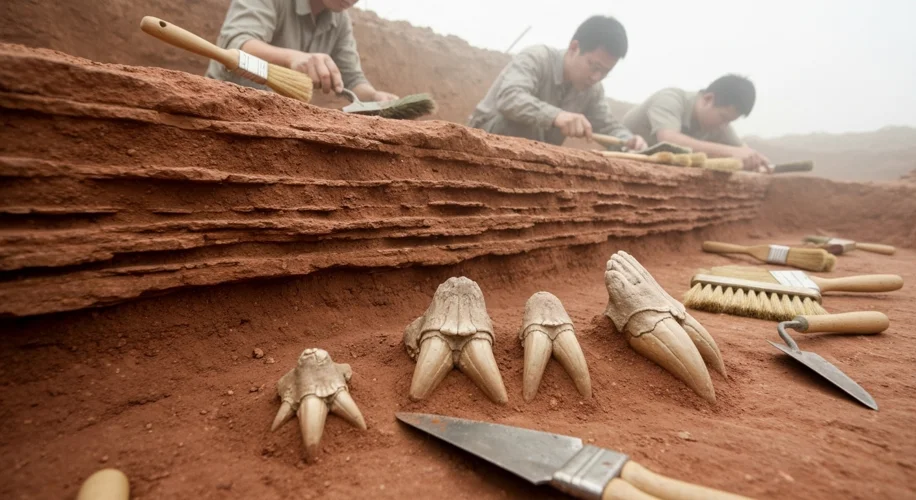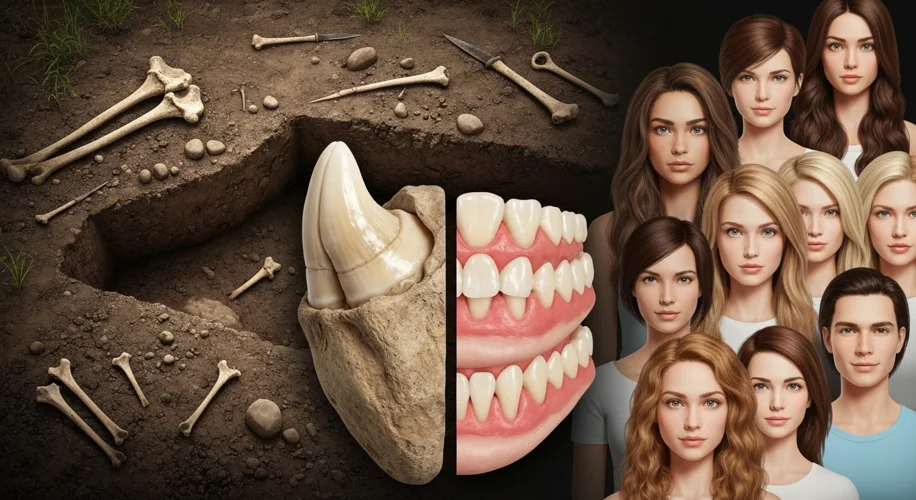Imagine digging into the earth, not for treasure, but for whispers of our deepest past. In the summer of 2025, that’s precisely what a team of paleontologists did, unearthing dental fossils in China that have sent ripples of excitement through the scientific community. These ancient molars, dating back a staggering 300,000 years, are not just old; they are revealing a previously unknown chapter in the human story, a complex mosaic of ancestry we are only beginning to decipher.
For decades, the narrative of human evolution has been pieced together through scattered fragments – skulls, bones, and tools unearthed from various corners of the globe. We’ve followed the trails of Australopithecus, Homo habilis, Homo erectus, and of course, our immediate predecessors, Neanderthals and Denisovans. Yet, the picture has always been incomplete, a grand tapestry with threads missing, hinting at connections and branches we haven’t yet identified.
The discovery site, nestled in the rolling hills of southern China, has yielded a treasure trove of hominin fossils. Among them, the 300,000-year-old teeth stood out. Their unique morphology – a blend of archaic and more recent human traits – immediately signaled something extraordinary. These weren’t quite Homo erectus, nor did they fully align with the characteristics of early Homo sapiens or their close relatives like the Denisovans, who are known to have inhabited parts of Asia.

What makes these teeth so significant? Dr. Li Wei, lead paleontologist on the excavation, explained the intricate details. “The enamel thickness, the cusp patterns, the root structure – these features suggest a population that likely shared ancestry with populations further west, perhaps even with the Denisovans, but had also developed distinct adaptations here in East Asia,” he stated in a recent interview.
This discovery challenges the prevailing models of human migration and interaction. It suggests that East Asia was not merely a periphery in the grand story of human origins, but a dynamic crucible where different hominin lineages met, interbred, and evolved. The 300,000-year-old fossils could represent a population that branched off from a common ancestor much earlier than previously thought, or perhaps a group that absorbed genetic material from multiple migrating hominin waves.
The implications are profound. If these teeth belong to a distinct, previously unknown hominin species or subspecies, it means our family tree has another significant limb. It opens up questions about their lifestyle, their interactions with other hominin groups that may have inhabited the region concurrently, and their ultimate fate. Did they contribute genes to modern human populations in Asia? Did they go extinct, or were they absorbed into other groups?
Further analysis, including ancient DNA extraction and comparative studies with other fossil finds, is underway. The challenge is immense; ancient DNA is notoriously fragile and difficult to retrieve, especially from fossils of this age. However, the potential rewards are immeasurable. Unlocking the genetic code of this new ancestor could rewrite our understanding of human adaptability, dispersal patterns, and the complex interplay of populations that shaped who we are today.
This find serves as a powerful reminder that the story of human evolution is far from over. The earth still holds secrets, patiently waiting to be uncovered. These 300,000-year-old teeth from China are not just fossilized remnants; they are the keys to unlocking a new, and perhaps even more fascinating, chapter in the epic journey of humankind.
Timeline of Key Hominin Discoveries:
- ~4.4 million years ago: Ardipithecus ramidus (Ethiopia) – Early bipedal hominin.
- ~4 million – 2 million years ago: Australopithecus species (East Africa) – Including Lucy (Australopithecus afarensis).
- ~2.4 million – 1.4 million years ago: Homo habilis (East Africa) – First toolmakers.
- ~1.9 million – 100,000 years ago: Homo erectus (Africa, Asia, Europe) – First hominin to leave Africa.
- ~600,000 – 400,000 years ago: Common ancestor of Neanderthals, Denisovans, and modern humans.
- ~400,000 – 40,000 years ago: Neanderthals (Europe, Western Asia).
- ~300,000 years ago (Present Discovery): Unknown hominin dental fossils (Southern China).
- ~300,000 – 200,000 years ago: Early Homo sapiens (Africa).
- ~160,000 – 15,000 years ago: Denisovans (Asia).
- ~30,000 years ago: Last known Neanderthal populations.
- ~70,000 – 50,000 years ago: Homo sapiens migration out of Africa, encountering Neanderthals and Denisovans.
This discovery in China adds another layer of complexity to this already intricate timeline, suggesting that the human family tree was far more bushy and interconnected than we once imagined.

